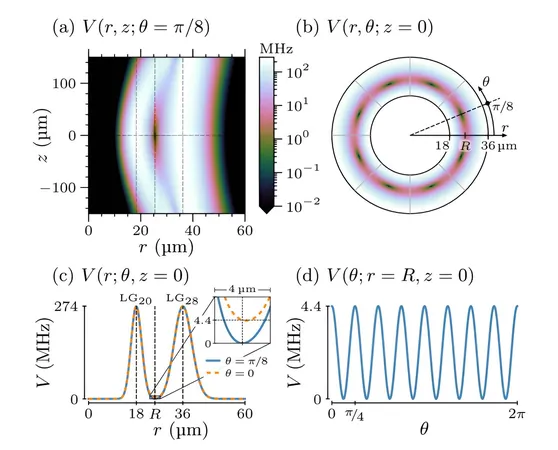
Revolutionary Miniaturized Quantum Rotation Sensor Set to Transform Measurement Technologies
2024-10-01
Introduction
In an exciting breakthrough in quantum sensing technology, physicists from the University of Michigan have designed a novel proof-of-concept quantum rotation sensor that significantly reduces the size of traditional atom interferometers to just a few microns—smaller than the width of a human hair. This advancement opens up new possibilities for utilizing atom interferometers beyond laboratory confines, heralding a new era of precision measurement.
What are Atom Interferometers?
Atom interferometers capitalize on the wave-like properties of atoms, measuring phenomena such as gravity, acceleration, and rotation with unparalleled accuracy. Traditionally, these instruments are massive, requiring towering structures that can stretch tens of meters into the sky. However, lead researcher and doctoral student Bineet Dash emphasizes that this new micron-scale design allows for portability and practicality in real-world applications.
Potential Applications
The innovative research could empower scientists to address myriad challenges—from detecting minuscule gravitational waves that ripple through the fabric of the universe to monitoring minute changes in Earth's gravity linked to ice sheet melting in Antarctica. Currently tethered to bulky setups, atom interferometers have struggled to make a tangible impact outside of controlled environments.
The Radical Design
The radical design, showcased in the latest edition of AVS Quantum Science, utilizes a distinctive laser beam that manipulates atoms into a pinwheel-like formation. With the capability to scale from a radius of just 30 microns to 300 microns, this design ushers in new avenues for applying quantum sensors to various fields, including inertial navigation and gravity mapping.
Advantages Over Conventional Optical Interferometers
Unlike conventional optical interferometers that utilize light to detect rotation, these atom interferometers promise orders of magnitude increased sensitivity due to the unique behavior of atoms as both particles and waves. According to Dash, while light interferences measure rotation using the well-established Sagnac effect, atom-based sensors leverage atomic wavelengths, enhancing precision significantly.
The Mechanism of Operation
The typical configuration of atom interferometers involves launching atoms into a vacuum, then allowing them to travel along different paths before reuniting, which can lead to information loss if they disperse. The researchers addressed this challenge through the inventive use of optical lattices—a framework created by intersecting laser beams that can trap atoms in stable patterns.
Advancements in Atomic Manipulation
Their previous work in 2021 laid the foundation for this new concept by demonstrating how different atomic states can be manipulated within those lattices. Now, their latest innovation introduces an angular movement, akin to a spinning pinwheel, allowing them to measure rotation with newfound accuracy.
Conclusion and Future Prospects
Dash mentions, "Currently, atom interferometers excel in fundamental physics, yet they are cumbersome, energy-intensive, and not easily applicable in practice. Our design aims to adapt and leverage the principles of quantum mechanics for practical applications."
With ongoing efforts to create a prototype experiment using Bose condensed cold atoms, the research group is poised to explore how their miniature design can be effectively deployed in various industries—transforming everything from aviation navigation systems to advanced gravitational measurements.
As these groundbreaking advancements continue to unfold, the future of quantum technology looks promising, with the potential to reshape our understanding and application of measurement techniques in an increasingly technologically driven world.


 Brasil (PT)
Brasil (PT)
 Canada (EN)
Canada (EN)
 Chile (ES)
Chile (ES)
 España (ES)
España (ES)
 France (FR)
France (FR)
 Hong Kong (EN)
Hong Kong (EN)
 Italia (IT)
Italia (IT)
 日本 (JA)
日本 (JA)
 Magyarország (HU)
Magyarország (HU)
 Norge (NO)
Norge (NO)
 Polska (PL)
Polska (PL)
 Schweiz (DE)
Schweiz (DE)
 Singapore (EN)
Singapore (EN)
 Sverige (SV)
Sverige (SV)
 Suomi (FI)
Suomi (FI)
 Türkiye (TR)
Türkiye (TR)